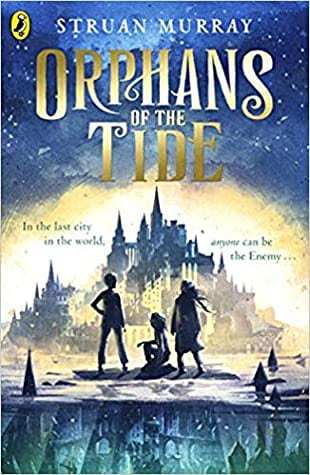Orphans of the Tide by Struan Murray
Book of the Week: 31 May 2020
This week we find ourselves in The City, the only city left in a drowned world full of fearful inhabitants. An evil Enemy haunts their streets and their imaginations, regularly taking over the body of some poor chosen human who is then dubbed The Vessel and who must be put to death. We learn its methods from excerpts from The Diary of Claude Hestermeyer which are interspersed throughout the story. Claude was a Vessel from the past who wanted to hand on advice before he was killed.
Ellie is a young, orphaned inventor in the city, who survives by mending machinery that was mostly created by her mother. She is helped by the wayward Anna, her best friend with whom she continually bickers. When a whale is washed up on one of the city’s rooftops, and a bewildered young man is cut out of its belly and declared the new Vessel, Ellie sets out to save him from being condemned to death by the City’s Inquisitors who are the ruling class of their society. She is offered help by a boy called Finn who is desperately seeking her approval and who she doesn’t seem to like. The odds are heavily stacked against Ellie and Anna – are they just being stubborn and foolhardy in their desire to help a stranger?
The author has created an exciting adventure in a wonderfully well-developed world. Images of the sea and all its creatures are seamlessly woven into the story. The relationship between some of the characters reminded me of that between Harry Potter and Tom Riddle and there was also echoes of Mortal Engines by Philip Reeve in the imaginative setting and inventive characters.
Other books that feature flooded worlds include:
Flood Child by Emily Diamand
Not the End of the World by Geraldine McCaughrean
Floodland by Marcus Sedgwick






